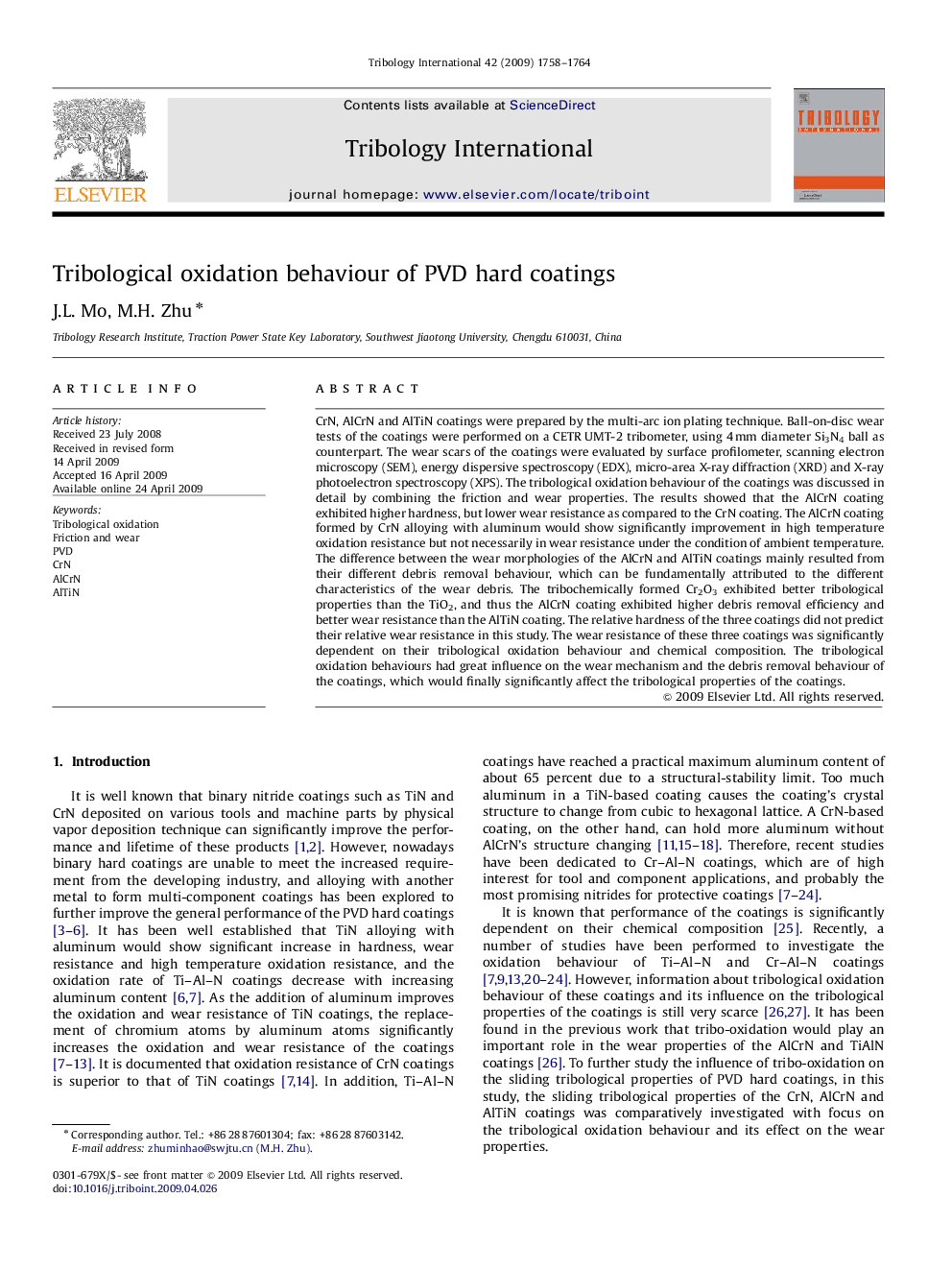| Article ID | Journal | Published Year | Pages | File Type |
|---|---|---|---|---|
| 616078 | Tribology International | 2009 | 7 Pages |
CrN, AlCrN and AlTiN coatings were prepared by the multi-arc ion plating technique. Ball-on-disc wear tests of the coatings were performed on a CETR UMT-2 tribometer, using 4 mm diameter Si3N4 ball as counterpart. The wear scars of the coatings were evaluated by surface profilometer, scanning electron microscopy (SEM), energy dispersive spectroscopy (EDX), micro-area X-ray diffraction (XRD) and X-ray photoelectron spectroscopy (XPS). The tribological oxidation behaviour of the coatings was discussed in detail by combining the friction and wear properties. The results showed that the AlCrN coating exhibited higher hardness, but lower wear resistance as compared to the CrN coating. The AlCrN coating formed by CrN alloying with aluminum would show significantly improvement in high temperature oxidation resistance but not necessarily in wear resistance under the condition of ambient temperature. The difference between the wear morphologies of the AlCrN and AlTiN coatings mainly resulted from their different debris removal behaviour, which can be fundamentally attributed to the different characteristics of the wear debris. The tribochemically formed Cr2O3 exhibited better tribological properties than the TiO2, and thus the AlCrN coating exhibited higher debris removal efficiency and better wear resistance than the AlTiN coating. The relative hardness of the three coatings did not predict their relative wear resistance in this study. The wear resistance of these three coatings was significantly dependent on their tribological oxidation behaviour and chemical composition. The tribological oxidation behaviours had great influence on the wear mechanism and the debris removal behaviour of the coatings, which would finally significantly affect the tribological properties of the coatings.
